IAN GOSLING 17.7.2023
During the reign of Elizabeth 1 bands of strolling players performed in Dorchester. In 1607, four years after the succession of James 1, a group of players “Lord Berkeley’s Men” came to town to put on plays. The Town Corporation, which was becoming increasingly puritan in its views, allowed them to be performed in “the Common Hall” but forbade performances on Sundays.
By 1607 the Corporation’s stance had hardened. When “The Prince’s Players” arrived to perform in the town permission was refused even though they had been authorised to tour Britain by a patent from the Master of Revels in London. When they were ordered to leave, their actor-manager, who had complained “noisily”, was imprisoned for two days before the company was expelled. Thereafter, and throughout the Civil War (1642-1652) and the subsequent Protectorate, no public entertainments were authorised in Dorchester apart from religious plays put on by the schools. Even puppeteers were condemned art Quarter Sessions on the grounds that their shows were “blasphemous”!
Despite the restoration of the monarchy in the person off Charles II in 1660, and his visit to the town in 1665, the town’s magistrates continued to have a restrictive attitude and forbade public entertainment in times of crisis, for example when there was a threat of plague the following year.
Theatre in Britain was also restricted by the Licensing Act of 1733 introduced by the then Prime Minister Sir Robert Walpole which introduced censorship of content by the Lord Chamberlain and restricted the production of plays to the Drury Lane and Covent Garden Theatres in London which benefited from Royal Patents. There were no restrictions on musical performances and consequently theatre survived, other than in those two London theatres, by productions which interspersed dramatic scenes with musical interludes, often in the form of melodramas and burlesques. Theatre in this form continued to be produced in the provinces by travelling players who used Shire Halls, Inns, barns and warehouses to put on their productions. But they were obliged, in any event, to obtain a licence from the local magistrate before performing.
The 1788 Theatrical Representations Act partially relaxed the restrictions on theatre by allowing the construction of theatres in the provinces whilst maintain licensing restrictions administered by local magistrates which, for example, limited seasons to sixty days in any period of four months and restricted the granting of licences to a single licence at any one time (effectively limiting the number of theatres to one per town).
This led to a boom in the construction of provincial theatres. Dorchester was not an exception and a small theatre in North Square called “THE THEATRE ROYAL” opened in 1807 on the corner of Friary Hill and Orchard Street. The plays performed there were produced by travelling theatre companies.
It is likely that it was in this theatre that the young Edmund Kean played during the 1813 season whilst he was a member of John Kemble’s touring company of actors. He was playing Octavian in Richard Cumberland’s play “The Mountaineers” when, on 15th November, he was talent-spotted by Samuel Arnold, the Acting Manager of the Drury Lane Theatre in London. A week later, on 22nd November, his eldest son died of the consequences of measles just after his fourth birthday and was buried in the churchyard of St Peters. In the January 1814 he caused a sensation when he appeared in Drury Lane as Shylock in Shakespeare’s “the Merchant of Venice” and went on to triumph in the star roles of “Othello” and “Richard III”
Some twenty years later the Theatre Royal was transformed into Assembly Rooms which competed with the entertainment provided in the ANTELOPE in South Street, principally card playing. One drawing exists of it in the late 19th century by when it had ceased to operate and was being used by the Salvation Army before the construction of its Citadel on Salisbury Street in 1875. The building was demolished in the 1980s and a block of flats was constructed on the site.
“The LOYALTY THEATRE” was opened on the corner on High West Street on 22nd February 1828 by Mr Henry Lee with the comedy “John Bull” and a farce “The Spoil’d Child”. It occupied a mid-18th century building which is now used by “The Horse with the Red Umbrella” tearoom (Photo II) and a long wing extending from it along Trinity Street completed in 1828 and incorporating an earlier 17th century structure. The stage was 24 feet deep, and the auditorium was surmounted by a balcony.
“THE LOYALTY THEATRE” closed in 1843, ironically the year in which a new Theatres Act abolished all restrictions on the construction of theatre, and the Trinity Street wing was then used as a warehouse by Godwin’s Glass and China Store. In 1924 it was briefly opened to visitors at the request of Thomas Hardy, on the occasion of the staging elsewhere in the town of his dramatised version of his novel “Tess of the d’Ubervilles”. It was finally demolished in 1965.
The name “The Horse with the Red Umbrella” was the title of the last play performed in the theatre before its closure.
In Weymouth a theatre had been installed in a former Congregational Church in St Nicholas Street and was open for the first visit by George III in 1789. It was small, with only 400 seats, and was managed by a Mr Hughes who also managed the theatre in Exeter, which had opened in 1787. Naturally, Weymouth’s theatre was named “The Theatre Royal”. It was assiduously patronised by the King and Queen during their summer holidays in the resort, up to and including their last visit in 1805, and attracted leading actors and actresses from London, including Sarah Siddons, the celebrated tragedian from Drury Lane. It declined as from the opening of the “Weymouth Pavilion” in 1908 and the building was demolished in 1968.
Why were the two theatres in Dorchester both so short lived? One must assume that compared to the Theatre Royal in Weymouth they suffered from a lack of patronage from royalty and aristocracy, and that the town’s population was too small in the first part of the 19th century (3033 souls in 1831) for them to be viable. Perhaps also the leading citizens of Dorchester remained puritanical in their attitude to entertainment!
Dorchester’s first cinema, “THE ELECTRIC PICTUREDROME”, was opened in April 1911 in Durngate Street in the converted Victoria Hall (labelled “Allington Hall” in the Ordonnance Survey map of the town published in 1888), which might originally have been a theatre. It was rebuilt in 1922 and renamed “THE PALACE THEATRE”. It closed in May 1957 and its site is now occupied by a group of flats called Palace Court.
“THE PLAZA” in Trinity Street (Photo III) is the only surviving building in central Dorchester in Art Deco style. It was built by the Watts Brothers on 10th July 1933 and was inaugurated with the first screening outside London of the film “King Kong”. Its original theatre hall has been replaced by a multiplex, but it remains a good example of its kind.
It has recently been joined by the Odeon multiplex on the Dorchester Brewery Site.

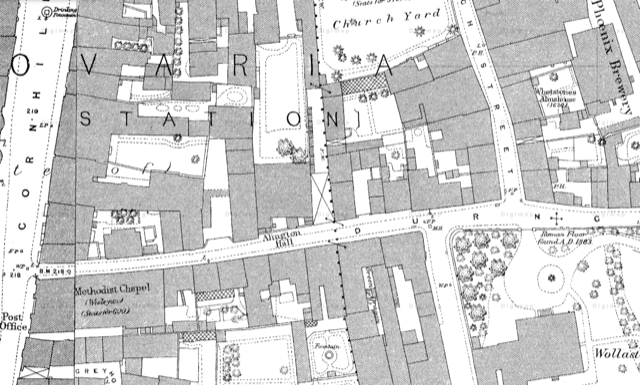
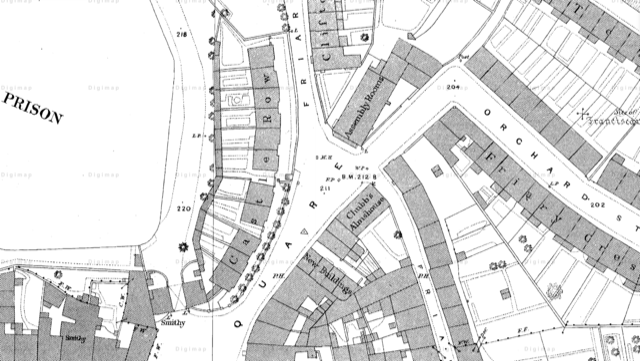
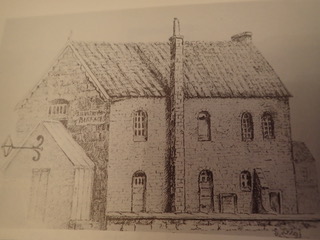
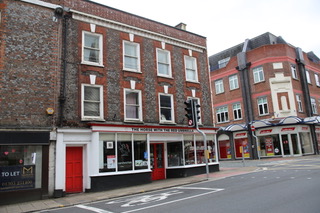
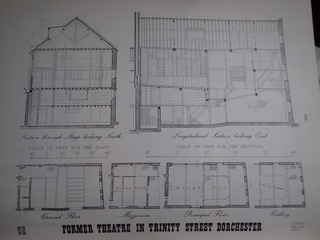
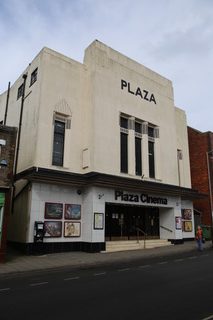
Recent Comments